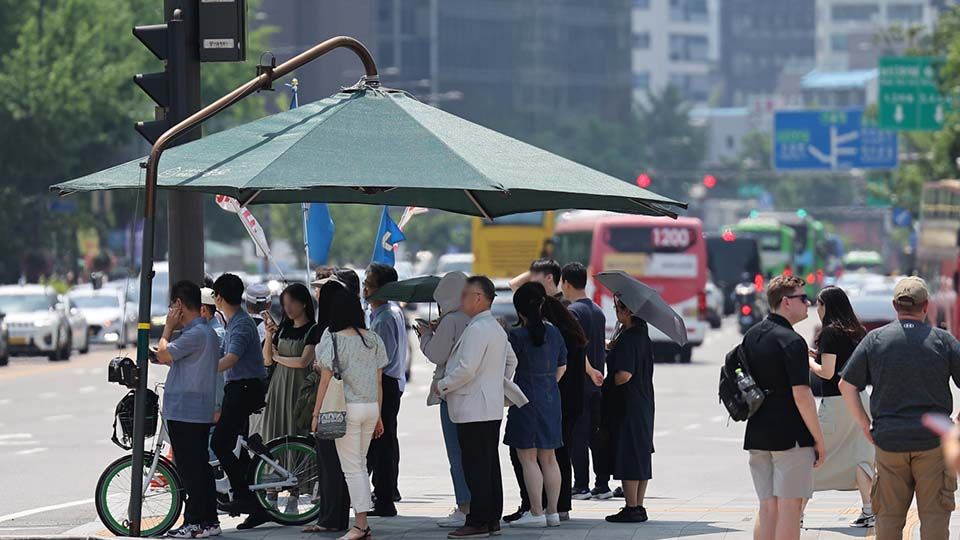June 20, 2024
SEOUL – Wednesday was expected to record the hottest day in June since weather records started to be kept in many cities nationwide. As of 3 p.m., Wednesday, the heat had broken several daytime temperature records across the country, including in Seoul, according to the Korea Meteorological Administration.
Gyeongju in North Gyeongsang Province saw daytime temperatures reaching as high as 37.7 C, recording the highest June temperature in the city since 2010. Gwangju’s daytime temperatures reached 37.2 C, recording the highest temperature of the month since local weather records first began to be kept in 1939.
The city of Daejeon also set a new temperature record for the first time in two years, as daytime temperatures reached 36.1 C — beating its June temperature record of 35.7 C in 2022.
The first heat wave warning of the year was issued in Seoul at 10 a.m. on Wednesday, with daytime temperatures expected to reach as high as 35 degrees Celsius.
Heat wave warnings were issued in 92 regions across South Korea, due to the influence of high pressure and warm westerly winds bringing higher temperatures compared to typical years. In Korea, a heat wave advisory is issued when the highest apparent temperature is expected to reach 33 C or higher for two or more consecutive days.
Today’s daily high in Seoul reached 35.6 C, the highest June temperature Seoul has seen since June 25, 1958.
In Goyang, Gyeonggi Province, daytime high temperatures rose as high as 37 C, while Daegu saw its high forecast at 36 C.
Gangneung, Gangwon Province was hit with a third tropical night, as the low stayed above 25 C overnight since its first such night on June 11. Wednesday’s daytime temperatures in Gangwon Province are expected to range between 33 C and 36 C.
Meanwhile, the KMA predicted summer this year to be hotter than usual, with similar or heavier rainfall than average in its prediction report issued May 23.
The prediction showed that there is a 50 percent chance for temperatures in June and August to exceed the previous three-decade average, with a 40 percent chance for July. Regarding precipitation, the KMA suggested a 40 percent chance of precipitation exceeding the 30-year-average in July and August.
Monsoon season was assessed as likely to begin Wednesday evening, with heavy rain anticipated to fall on Jeju Island until Friday.
As low pressure slowly moves toward the east, the KMA anticipates 50 to 100 millimeters of rain to fall on the island over two days. Some heavily hit regions on the island are to see up to 150 mm of rain, while mountainous regions on the island may see up to 200 mm.
The national weather agency added that rainfall would be especially intense Thursday, with 30 mm of rain forecast to fall per hour — accompanied by strong wind gusts, thunder and lightning.
While the heavy rain is expected to cease early Friday morning, the KMA predicts rain will begin to fall again from Saturday until Monday, as the North Pacific High subtropical anticyclone extends toward southern parts of Jeju Island.
“If low pressure moves toward the south June 22-24, some cities located in the southern region of South Korea can also expect to see rainfall during that period of time,” said a KMA official. Until Friday, South Jeolla Province, South Gyeongsang Province and other cities in the south such as Busan and Ulsan may see up to 5 mm of rain.
Monsoon season in Korea typically begins on Jeju Island and slowly extends upward to the southern and central regions. This year’s monsoon season is to begin six days earlier than last year, according to KMA records.
No rainfall is forecast for the central region until next week, according to the KMA. While temperatures will be lower in the southern parts of the country from Thursday due to thick clouds, wind and rain, heat will persist in other parts of Korea without rainfall until next week.


